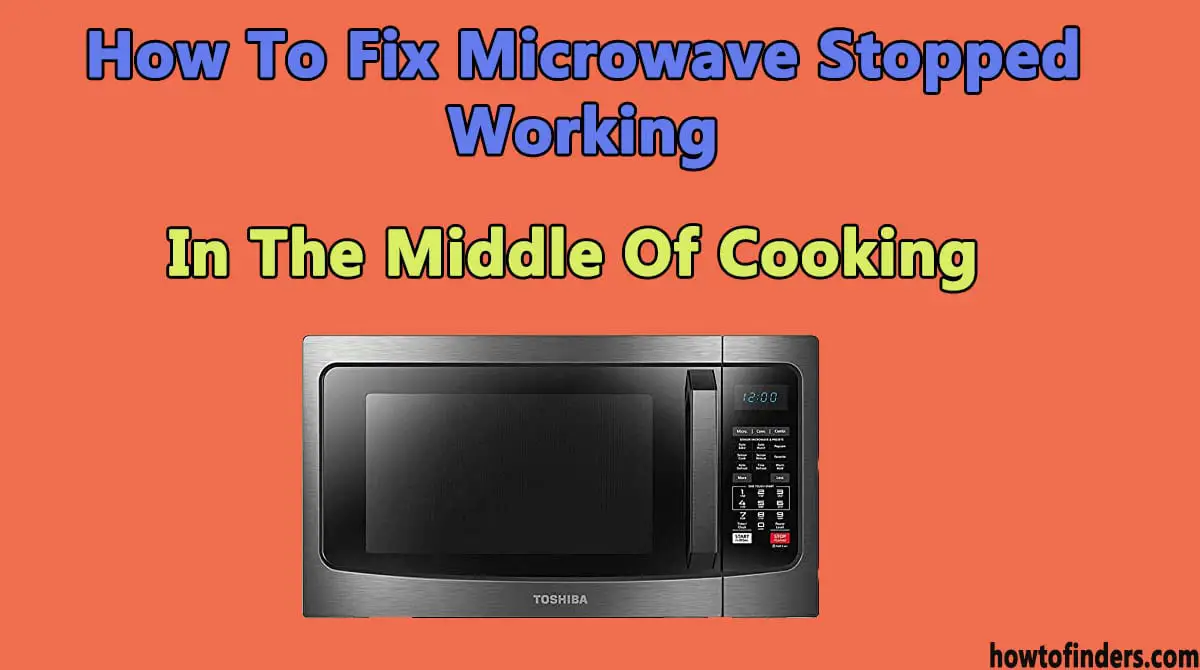Microwaves can be fairly finicky, but if yours simply won’t turn on at all. There are a few troubleshooting steps you can take to get it back up and running in no time.
I also faced the same problem when I was cooking the food. I didn’t expect this and was astonished to know that it can suddenly stop working.
This microwave stopped working in the middle of cooking and my wife was not happy with me, so I had to fix it fast!
I thought maybe we had blown the fuse or tripped some kind of breaker switch, but that wasn’t the case either.
Table of Contents
ToggleRemove the microwave from the wall
Remove your microwave and set it on a sturdy surface like a counter. Look for anything that seems loose.
If there’s something protruding from inside, try to pop it back in place.
If it looks broken or out of place, check online for an exploded view (or look at your manual) and use that as a guide to remove it and figure out what part you need to replace.
Oftentimes, these parts can be found at local hardware stores or home improvements stores like Lowe’s or Home Depot.
All you have to do is match up each piece you removed with its replacement in order to get things running again!

Unplug power cord
Many microwaves have a fuse at their plug. This is designed to keep current from flowing in case of overheating or fire.
If your microwave is not responding to any buttons and it won’t turn off, unplug it and inspect that plug for a fuse.
If you see one, pull it out and take it with you to an electronics store to replace it.
Just make sure that your microwave doesn’t also use a circuit breaker (instead of a fuse) or you may be looking at an even bigger repair bill than you imagined.
To find out if your microwave has a breaker or not, consult your user manual. And while we’re on the subject of user manuals, now’s as good a time as any to locate yours! Use it!
Check if the fuse has tripped
Unplug your microwave and check if any of your circuit breakers or fuses have tripped. If so, turn off all power to your appliances and reset them.
There could be something wrong with your microwave’s fuse, which will need to be replaced by a professional if you are unsure how to do it yourself.
Fuses are usually located in your electrical panel, which you can find in most kitchens. Alternatively, consult an electrician for more information on how to handle a fused appliance.
Replace fuse or reset breaker
Often a microwave that stops working in the middle of cooking is caused by a fuse or circuit breaker tripping. A fuse can be replaced in just a few minutes and you may even have an extra one on hand to use.
If you don’t, buying one at your local hardware store shouldn’t cost more than $5-10.
You should check with your manufacturer to find out which type of fuse you need before heading out though; some microwaves are special and require specific fuses (rather than standard household ones).
Resetting a breaker is simple—just turn off power to that specific outlet for about 10 seconds, then turn it back on.
This will reset any tripped breakers and often fix minor electrical problems related to microwaves like yours.
Turn the power back on and see if it works
If your microwave stops working in mid-cook, don’t panic—and don’t turn it off. Running a microwave is not hazardous because microwaves are made up of radiation.
This radiation dissipates after traveling just 12 to 18 inches (30 to 45 cm) beyond its source.
While there is no health risk associated with cooking food in a stopped microwave, allowing it to stand with power off for long periods of time will cause an unpleasant odor and may damage electronic components.
So first try hitting start again, as odd as that sounds. If you can hear a whirring sound but nothing appears to be happening on your control panel,
chances are you have some sort of power outage outside your home—perhaps even caused by your microwave itself!
So after trying these steps, turn your microwave on. After that check, if it works fine, if it does not, then contact customer support.
Also read: Old GE Fridge Ice Maker Not Working-An Ultimate Guide
Conclusion
Fixing a microwave that’s not working is sometimes as simple as replacing something small and cheap. Other times it can be a sign of a much bigger problem.
Before you start throwing things in your microwave or replacing parts, you should make sure you turn off your electrical power source.
Whether that means unplugging your microwave or pulling out your circuit breaker (that will stop electricity to your entire house) it’s very important to double-check that no one will get hurt while you start tinkering with your machine.
Once you’ve made sure no one can get hurt, test each element in your appliance individually. Also, use extreme caution when handling hot materials.
Things like light bulbs and heating elements do not respond well to being treated roughly; remember—safety first!